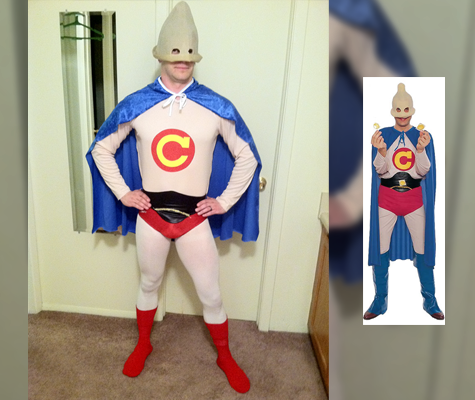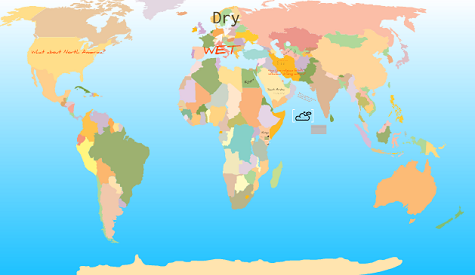
This post can either be used as a handout or an outline for a presentation on the topic of avoiding post-retirement identity difficulties during student athlete transitions. (It wasn't intended to be an academic paper, which is why my citations are very brief and not properly formatted).
I created this handout while I was in the M.S. Sport Behavior and Performance program at Miami University in Oxford, Ohio. At the time, I was recognizing signs of post-retirement identify difficulties in myself, and researching this topic really helped me grasp what I was going through.
Personal Description Activity
Activity: Describe yourself in a list of 25 things. You only have a few minutes so write the first things that come to mind.
**AFTER COMPLETION OF ACTIVITY**:
After you have completed the activity, look at the first 5 items. Although you were not instructed to list the items in order of importance, the items you listed first are most likely the ones that you consider the most important or descriptive—because they were easiest to come up with. Example: you probably won’t see “I like apples” in the #1 spot, but “I’m a football player” seems more important to list first.
What is Identity?
Identity is defined as a multidimensional view of oneself that is enduring and dynamic, which means our identity is both stable and changing at the same time. How can this be? How we view ourselves is made up of a number of dimensions (like the things you listed in the activity), that have a fairly stable order of importance. However, the importance of each item can also be affected by other factors.
Stable and Changing: Think of your identity at practice, the most important dimension at that time is probably your role as an athlete. However, when you are taking an exam, your most important role is (or should be) your identity as a student. Both of these smaller parts make up how you view yourself as a whole—your identity.
Identity Narrowing
When one dimension of your identity takes priority over the others for a long period of time, it can become dominant or preferred. This can happen when the dominant dimension (athletic identity for example) takes control in other daily situations. Where you live, when you eat, when you sleep, who your friends are—pieces of
who you are that become associated with athletics can make your athlete identity dominant.
Identity Narrowing can be a good thing because it helps strengthen the dominant identity which can lead to increased motivation and focus, a more appropriate schedule for daily activities, improved goal setting, and group cohesion on an athletic team.
On the other hand, think of investing in the dominant identity as
putting all your eggs in one basket. Focusing on your identity as an athlete can help you during sports, but it may be athletes who identify strongly with the athlete role in particular who experience post-retirement identity difficulties.
What are Post-Retirement Identity Difficulties?
Post-Retirement Identity Difficulties are problems that arise after a transition (in this case retirement from competitive athletics) because of the loss of a major portion of identity. This loss may be expressed as an emotional, cognitive, or behavioral change.
Identify Difficulties Following a Transition
| Emotional | Cognitive | Behavioral |
| Depression | Unable to focus | Alcohol or drug abuse |
| Feeling anxious | Unable to make decisions | Anti-social behavior |
| Feeling isolated | Denial | Eating disorders |
| Frustration | Loss of confidence | Trouble sleeping |
| Anger |
| Can't seem to get things done |
Pearson and Petitpas (1990) predicted that transitions would be more difficult for athletes who:
- exclusively based identity on athletics.
- have a gap between level of aspiration and ability.
- are inexperienced with transitions.
- have limited ability to adapt due to emotional or behavioral deficits.
- lack supportive relationships.
- lack resources to cope with the transition.
This means that athletes with an exclusively dominant athletic identity, who are inexperienced with making decisions during a transition, and lack support or resources either from friends or members of the athletic department, may show more signs of difficulty adapting to their transition out of athletics.
The transition is also more difficult for athletes forced to retire early, or when the decision is out of their control—such as when the athlete is cut from the team, injured, or is ineligible. These transitions are usually more abrupt and leave the athlete less time to progress through the stages of transition.
Stages of Transition
Every athlete goes through the retirement transition after the completion of their athletic career—it is a time marked by a significant decrease in the amount of time spent competing in a particular sport, a decrease in the level of competition, or a time when the athlete stops being an athlete all-together.
Hopson and Adams’s (1977) process model addresses emotional and self-esteem reactions that go along with the transition. Stages can be thought of as a downward spiral followed by an upward climb in self-esteem and emotional reactions.
Each stage is marked by an emotional task that must be completed before moving on to the next level.
Emotional Tasks (Hopson and Adams, 1977)
Stage | Name | Description | Emotional response |
1 | Shock and Immobilization | End of career, involuntary transitions are more disruptive. | Feeling overwhelmed or shocked
|
2 | Minimization and Denial | Desire to make the transition feel less important or deny the truth to minimize negative feelings.
| Frustration, depression, anxiety, denial |
3 | Self-Doubt / Depression | Former athlete will begin to doubt their ability to provide for themselves.
| Sadness, fear of the future, anger, loss of self-esteem |
4 | Letting Go | Individual reaches a critical point of acceptance of the event and begins to look to the future.
| Let go of negative emotions, begin upward climb |
5 | Testing Options | A time to explore new options. A burst of energy and adopt a new way of looking at things.
| A sense of moving forward, excitement and exploration |
6 | Search for Meaning | Reflect on the “rollercoaster of emotions” in the previous stages. Active participation in changing thoughts, behaviors, feelings.
| Make sense of what has happened and attach new meaning to their experiences. |
7 | Internalization | Integration and renewal, exploration brings new ways of behaving and thinking. | Individuals are well adjusted and have learned new skills for coping with future transitions |
Take-Away Message
The more you know about the retirement transition from competitive athletics, the more prepared you will be to face the emotional, cognitive, and behavioral challenges. Here are some additional tips for dealing with the transition:
Become a Life-Long Athlete – Just because you are no longer competing for your college team doesn’t mean you have to stop playing sports all together. Participating in a club or community sports program is a great way to stay healthy and to meet people with similar interests.
Know your Support Network – No one is planning on having a difficult transition, but just incase it’s tougher than you thought—know who you can go to for guidance: coaches, peers, counselors, academic coordinators, career development personnel.
Transferable Skills – Apply your competitive identity to other aspects of your life such as your career or job search. You’ve learned a lot more from playing sports than just the game itself.






































